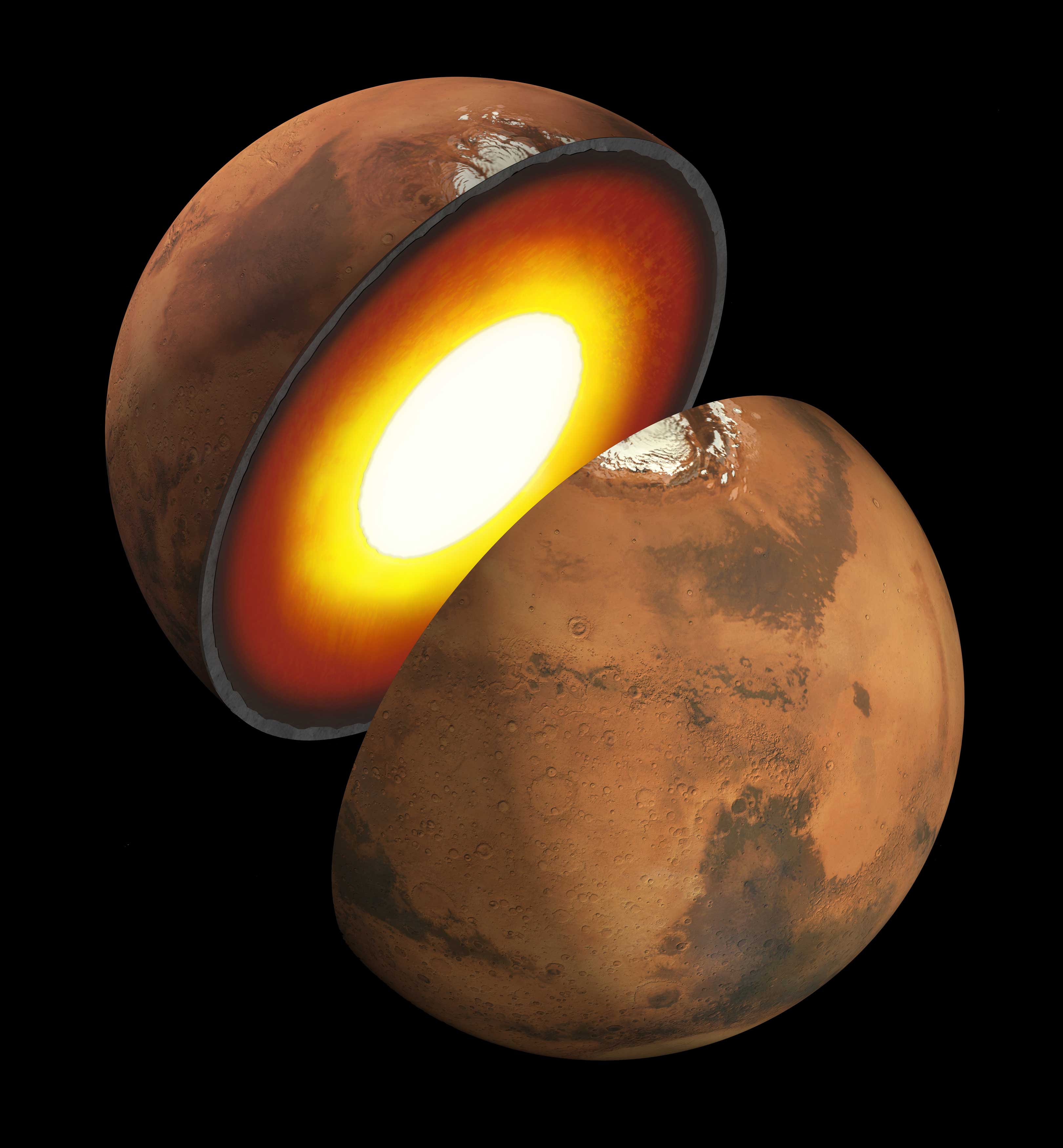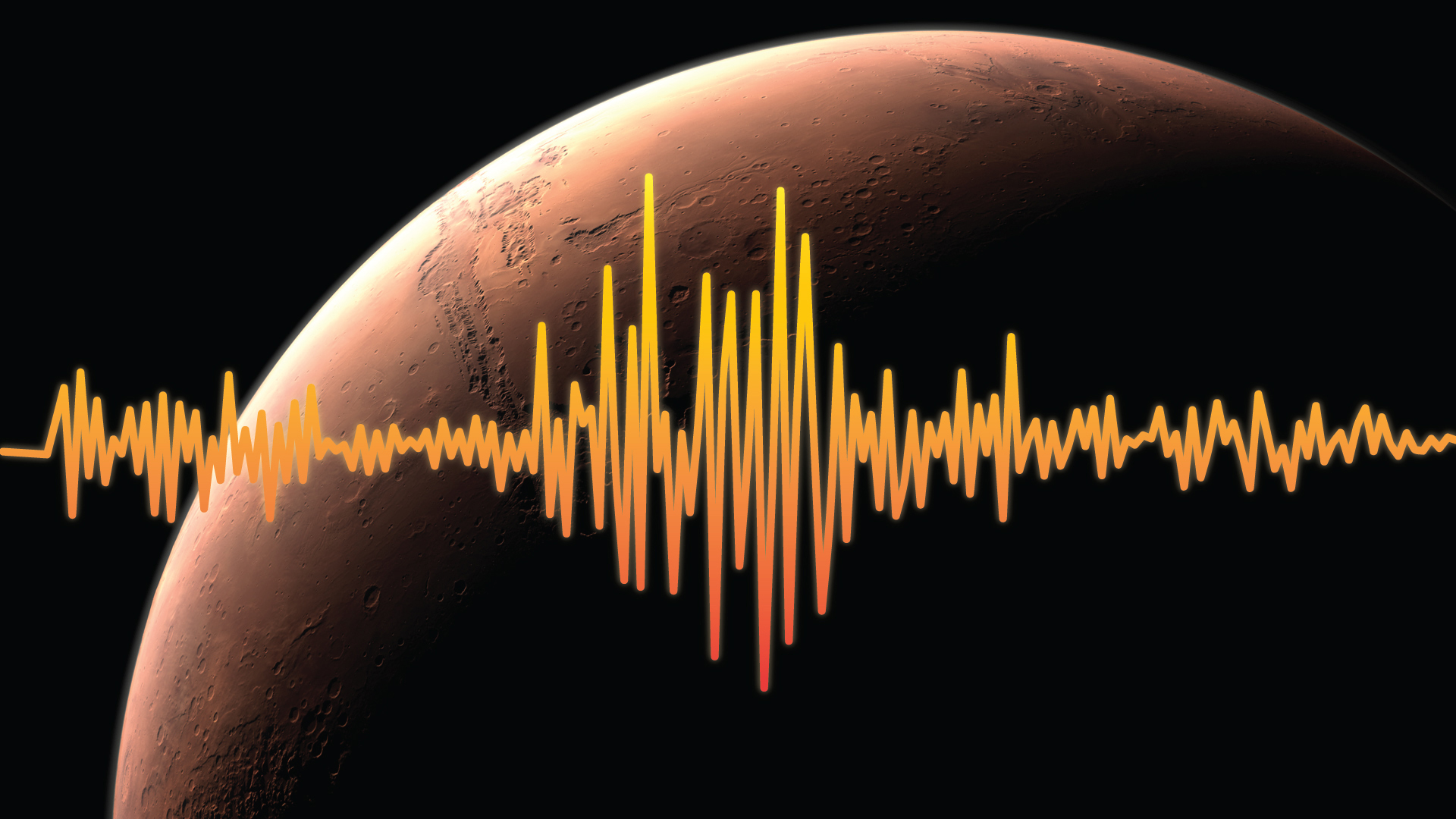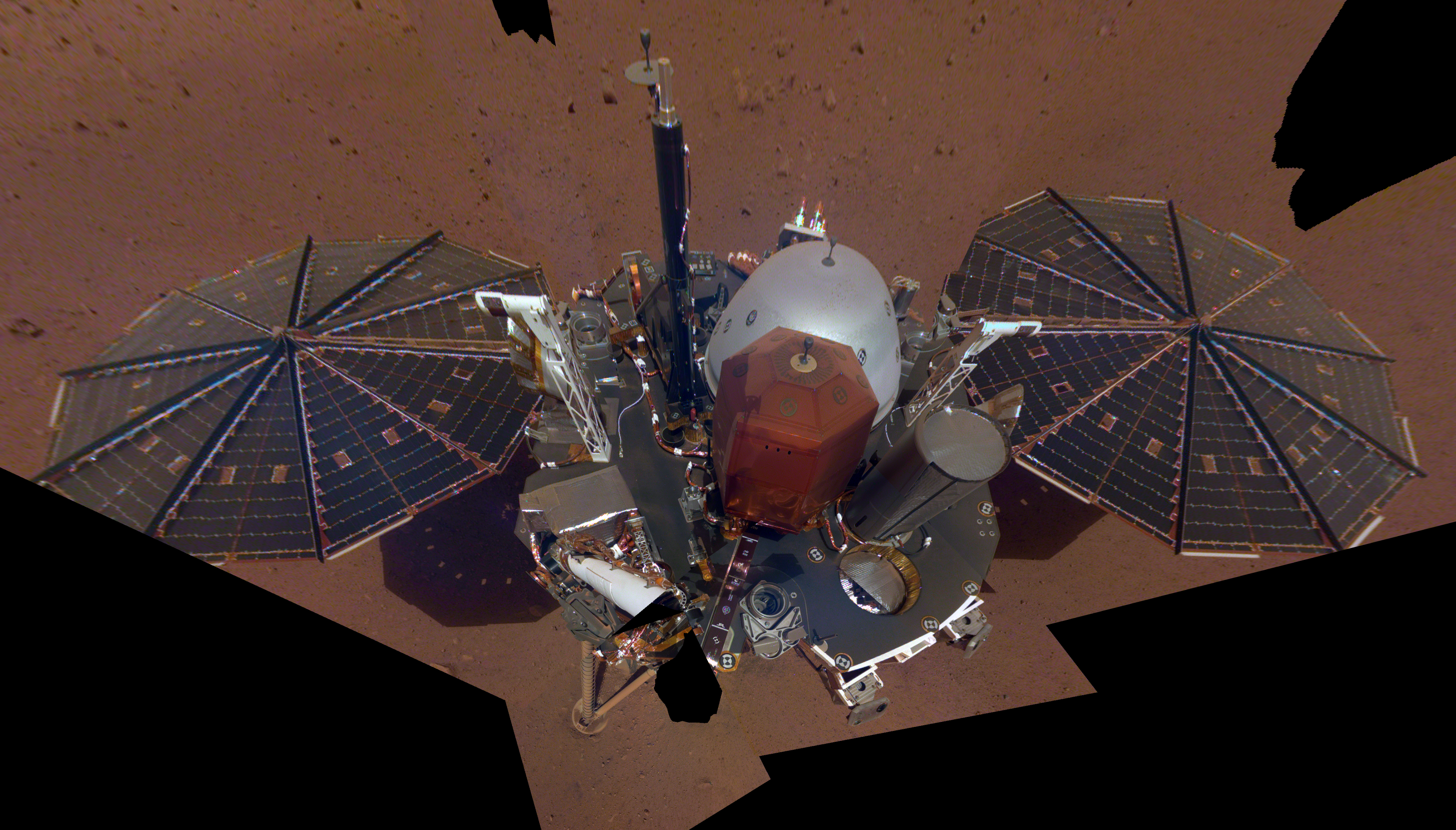InSight
Science
InSight studied the deep interior of Mars and was designed to take the planet's vital signs: its pulse, temperature, and reflexes.

Overview
InSight studied the deep interior of Mars and was designed to take the planet's vital signs: its pulse, temperature, and reflexes. InSight was the first mission to give Mars a thorough checkup since the planet formed 4.5 billion years ago.
Previous missions to the Red Planet investigated its surface by studying its canyons, volcanoes, rocks, and soil. But the signatures of the planet's formation can only be found by sensing and studying its vital signs farther below the surface.

Objectives
The InSight mission had two major goals, each with several science investigations, designed to help uncover the process that shaped all of the rocky planets in the inner solar system.
- To understand how rocky planets formed and evolved, InSight studied the interior structure and processes of Mars by determining:
- The size of the core, what it is made of, and whether it is liquid or solid.
- The thickness and structure of the crust.
- The structure of the mantle and what it is made of.
- How warm the interior is and how much heat is still flowing through.
- InSight will figure out just how tectonically active Mars is today, and how often meteorites impacted it. For this, it will measure:
- How powerful and frequent internal seismic activity is on Mars, and where it is located within the structure of the planet.
- How often meteorites impact the surface of Mars.
Science Instruments
NASA's InSight lander instruments peered into the Martian subsurface, seeking the signatures of the processes that shaped the rocky planets of the inner solar system, more than four billion years ago. InSight's findings shed light on the formation of Mars, Earth, and even rocky exoplanets.
Learn More
Science Highlights
With four years on the Red Planet, InSight captured the ‘vital signs’ of Mars, giving the planet its first thorough checkup since it formed 4.5 billion years ago.
